Working with HERE Tour Planning API
Blog|25 March 2021
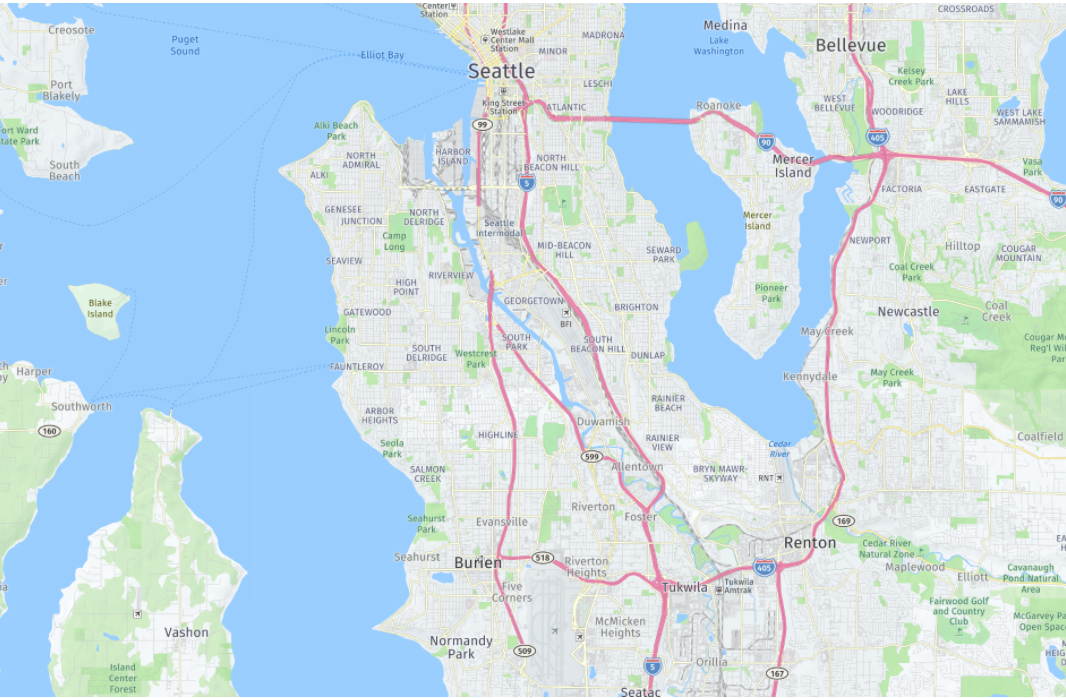
Welcome to an introduction of working with HERE Tour Planning. Tour Planning is an incredibly powerful API, and as such, requires a good deal of … planning. In this post I’ll introduce you to the API and its components, go over the items you’ll need to be able to use it, and share a simple example.
So what exactly is tour planning? At a high level, tour planning helps you manage a set of one more more vehicles (also called a fleet) that need to do certain jobs. These jobs may have restrictions on what time they can be done as well as what order. You can imagine a package delivery company having this problem every day. They have ten vehicles. Each vehicle has a cost for its operation. They have one hundred deliveries to make, many with specific times. How would you create a plan such that all packages are delivered, on time, at the cheapest price, and even account for traffic? This is where the Tour Planning API will help. The API can even consider changes to an existing plan. Lost a vehicle due to a breakdown? You can modify an existing plan to get new results.
As mentioned, making use of this API requires quite a bit of planning ahead of time. Some of the information you’ll need for a typical API call includes:
- The make up of your fleet, which includes the cost of vehicle operation, the times the vehicle is available, as well as where the vehicle starts its shift and where it needs to be when done. Your fleet will be specified both as a set of vehicle types as well as the total number of each type.
- Next, you will need to define the jobs that must be accomplished. This includes the type of job (like making a delivery or picking up an item), locations, how much time is available at that location, what times the job can be accomplished, what order the jobs must be made in, and how important a job is compared to another.
The tour planning developer guide contains full documentation for making requests and is further supported by an API guide as well.
Before getting started, one of the most important things to know is that tour planning supports both synchronous and asynchronous API calls. As you can imagine, the complexity of the work necessary to solve a tour planning problem can be quite high. In order to maintain the performance of the API itself, synchronous calls will have limits on jobs and fleet sizes. Luckily, you’ll get a clear error from the response if you go over those limits. (At the time this post was written, the documentation for synchronous requests specifies a limit of 250 jobs and 35 vehicle types.)
For asynchronous calls, the API will return an identifier that lets you then poll for the status at an interval of your choosing. When the work is done, you can then download the solution.
After determining what kind of call you will need to make, you begin by defining the problem. As described above, the problem consists of two portions.
The first is the plan, which is a formal list of jobs that need to be done. Jobs will consist of the following properties:
- Location
- Duration (how much time is spent at the location)
- Demand (a free form value that lets you define custom capacities for your fleet, like the ability to hold a certain number of people or pieces of hardware)
Along with these properties, you can additionally specify times for making a step as well as your own specific skills and tags associated with the job. Jobs are also associated with a few specific types – deliveries, pickups, and an instance of doing both. Finally, you can name jobs which makes it easier to work with the response.
The next aspect of the problem is the fleet. Again, don’t overthink this – your fleet of vehicles could be a fleet of one. A fleet is a set of vehicle types where each type consists of:
- An identifier
- The cost to use the vehicle
- Time shifts when the vehicle is available
- Size capacity
- As well as whether or not the type is a car or truck
Additional properties are also supported. As with jobs, you can include metadata to make it easier to work with the result data, but do not send private and identifying type information like licence plate numbers. Finally you’ll have an amount for each type.
This is quite a bit to consider, but the documentation has a specific page just for discussing the problem, and again, the API reference will go deeper into the properties and required values.
Once the problem is submitted and sent to the API, you then get to work with your solution. Solutions consist of:
- Statistics covering cost, distance travelled, duration, and a break down of times spent doing driving, serving jobs, and so forth.
- A list of “tours” which represent a vehicle type, stops that need to be made, and specific statistics about that tour.
- You also, potentially, get a list of jobs that could not be completed.
As with the problem definition, there’s documentation that goes into detail about the solution.
All in all, the problem definition is where you’ll spend the bulk of your time. Once it’s defined, and once you have a proper understanding of the result, it’s pretty trivial to make a call. Here’s an example of a synchronous call in a simple Node.js script. It only has one car so it’s incredibly trivial, but it’s illustrative of the “shape” of how you would use the API.
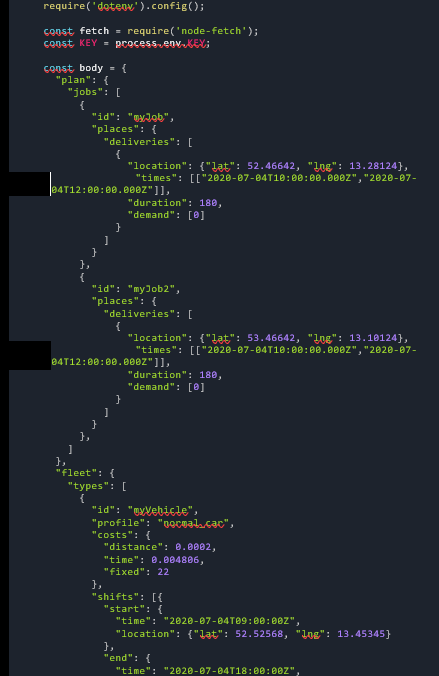
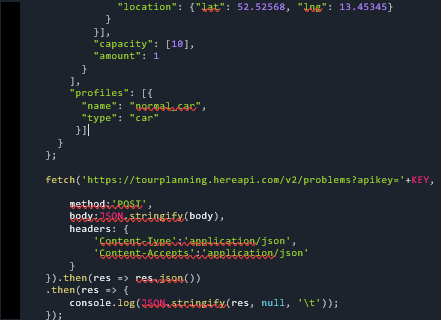
As you can see, nearly all of the code is the definition of the problem. Of course, in a real application you would do more with the solution than just dump it out to the console. Here’s how the result looks:
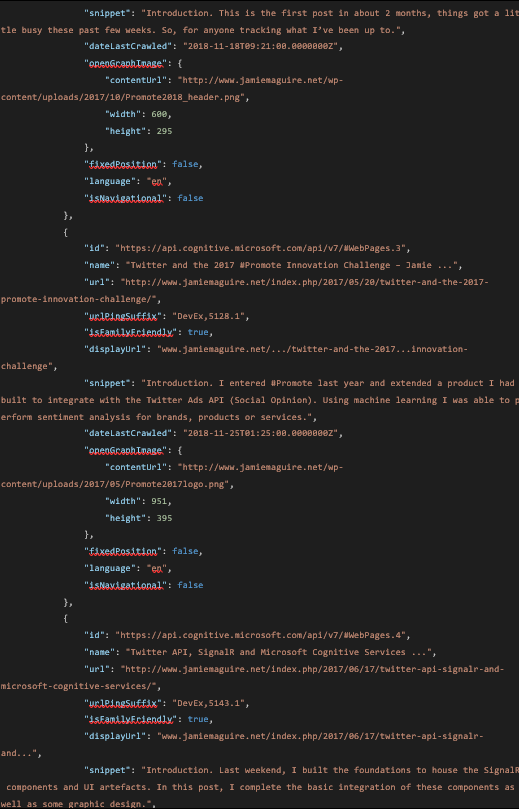

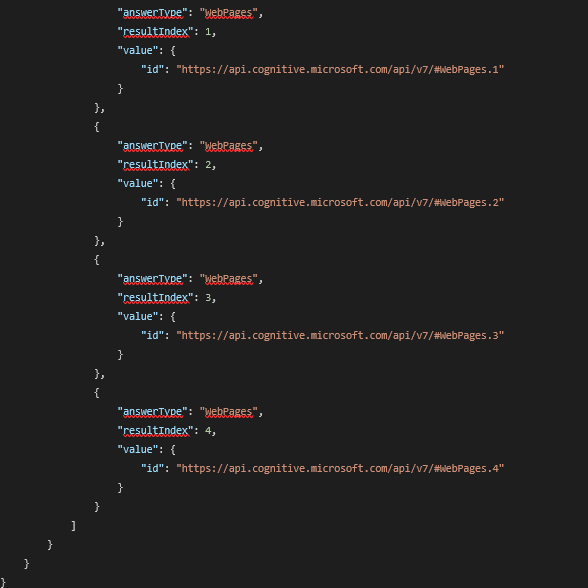
Yes, that’s a lot of data for a simple job. As your problem grows into more real world scenarios, you can expect the size of the result to grow accordingly.
We hope this introduction gets you excited about the power of this API. We definitely understand how complex this API is and we’re currently making updates to the documentation to make things a bit easier to use. For a more academic look at the problem, you can read Wikipedia’s detailed entry on what’s called the “vehicle routing problem”. (Warning – expect some high level math!)
Watch the recording of our HERE Tour Planning API 30-minute demo on our YouTube channel here
Contact the Grey Matter HERE specialist team for an evalution trial and to discuss your use case: here@greymatter.com / +44 (0)1364 655 133.
Visit the Grey Matter HERE Fleet Management page to learn more about the HERE Location Services.
This article originally appeared on the HERE Developer blog, reprinted with permission.
Contact Grey Matter
If you have any questions or want some extra information, complete the form below and one of the team will be in touch ASAP. If you have a specific use case, please let us know and we'll help you find the right solution faster.
By submitting this form you are agreeing to our Privacy Policy and Website Terms of Use.
Related News
Intel oneAPI 2024.1 A Milestone Release
What’s new in Intel oneAPI 2024.1 The 2024.1 release of Intel® Software Development Tools marks a major milestone for developers AND the entire software industry: the Intel® oneAPI DPC++/C++ Compiler has become the first compiler to fully support the SYCL...
ISV Partner Day Shortlisted for CRN Sales & Marketing Award
ISV Partner Day has been shortlisted for "Best Customer Event" at the CRN Sales & Marketing Awards
Microsoft 365 and Azure Security Tools: Microsoft Intune
In the second video in our series of short videos discussing Microsoft 365 and Azure security tools and concepts, our Microsoft experts cover off all you need to know about Microsoft Intune! Intune is a robust cloud-based solution to safeguard...
Women in Tech: A New Era | Roundtable
Fri 21 June 2024 5:00 pm - 11:30 pm BST
Get ready to shake it off (and network like nobody’s watching) because we’re hosting an exciting exclusive Women in Tech event with ESET that you won’t want to miss out on. Join us and share feedback, experiences and insights with...